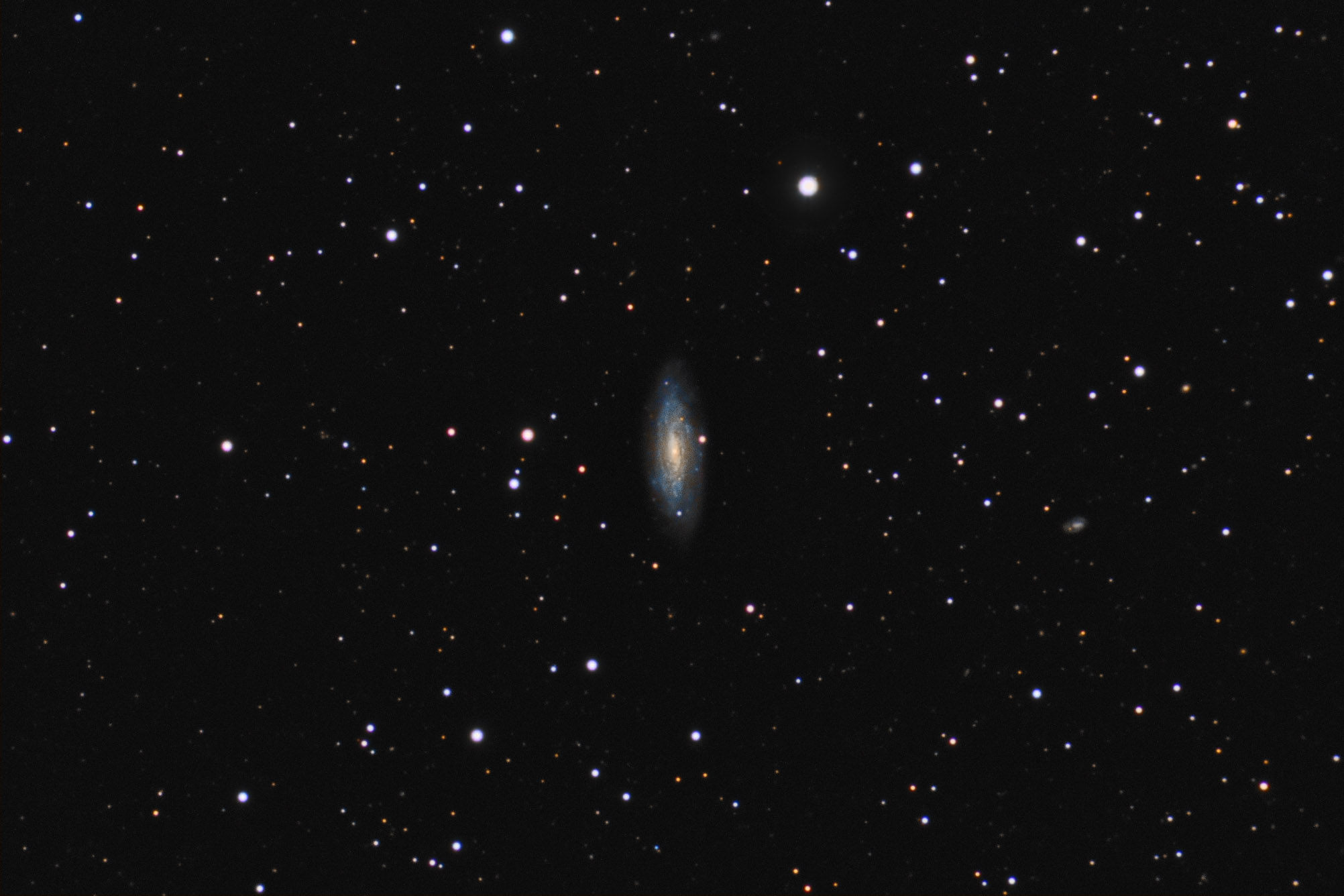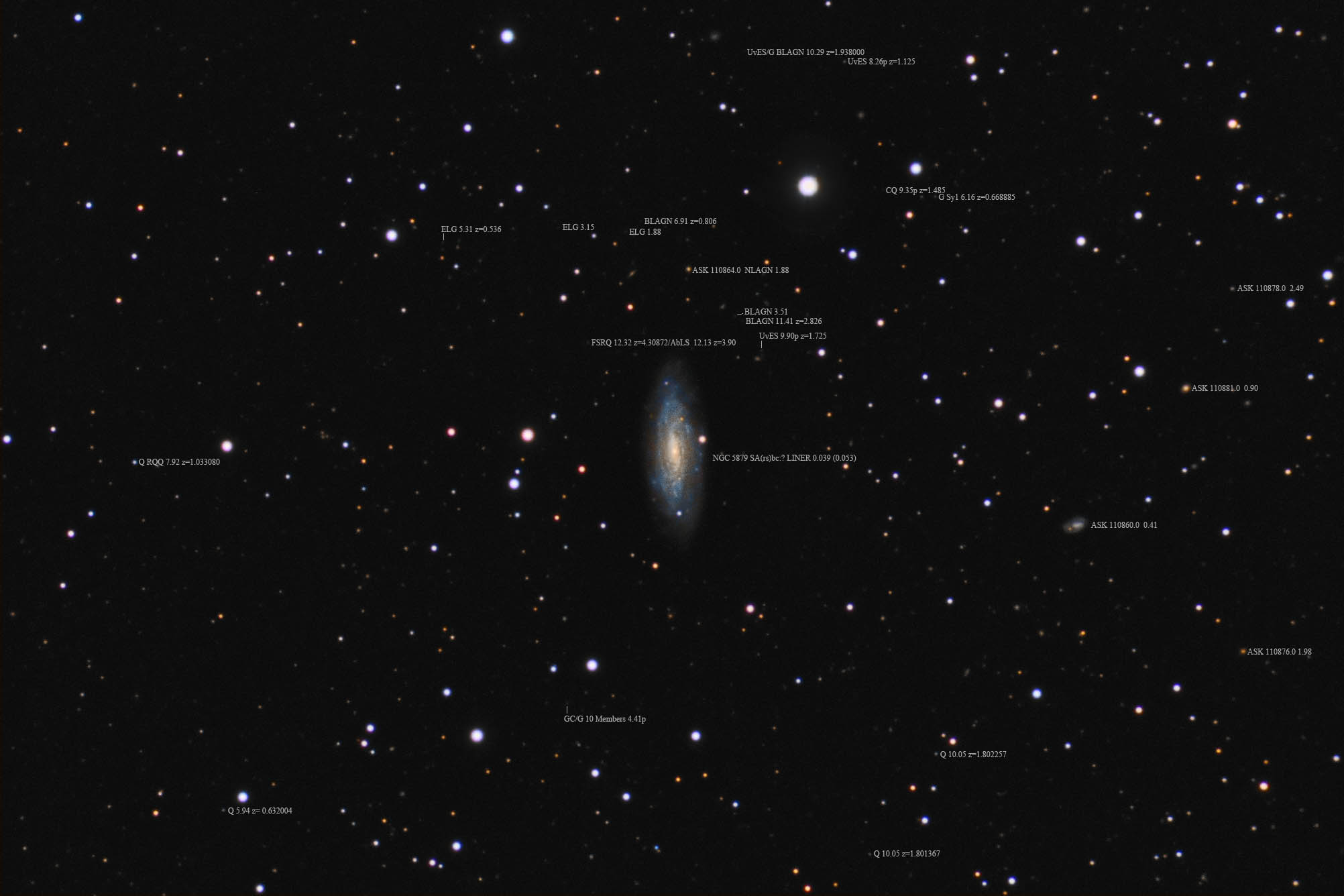| Description | Images |
Object name: NGC5879Designation(s): NGC5879, NGC 5879 is a somewhat edge on spiral galaxy in Draco only a bit over a degree northwest of the far better known NGC 5907 a really edge-on flat galaxy. Redshift puts it about 39 million light-years distant but Tully-Fisher measurements say it is further at about 53 million light-years. I took this on a very poor night for seeing though transparency was good. My resolution, as well as that of others, would indicate it is at least 53 million light-years distant so I'll go with that. That makes it about 75,000 light-years across. It was discovered by William Herschel on May 5, 1788 and is in the second Herschel 400 observing list. The main reason I put it on my to-do list. Related Designation(s):2MASS J15094672+5700007, 2MASX J15094675+5700007, 2MASXi J1509468+570003, 2XMM J150947.0+570002, 2XMMp J150947.0+570002, 3XMM J150946.8+570002, AKARI J1509469+570000, ASK 110861.0, CGCG 1508.4+5712, CGCG 297-004, CXO J150946.7+570000, CXO J150946.72+570000.5, CXOSEXSI J150946.6+570000, HDCE 0903 NED002, IRAS 15084+5711, IRAS F15084+5711, LDCE 1112 NED002, LGG 396:[G93] 002, LQAC 227+057 011, MCG +10-22-001, NGC 5879, NGC 5879:[L2011a] X0003, NGC5879, NSA 165958, NVSS J150946+565956, PGC 054117, SDSS J150946.74+570000.5, SDSS J150946.76+570000.7, SDSS J150946.77+570000.7, UGC 09753, UZC J150946.9+570003, WN B1508+5711, [GGK2005] 27, [M98j] 240 NED02, |

